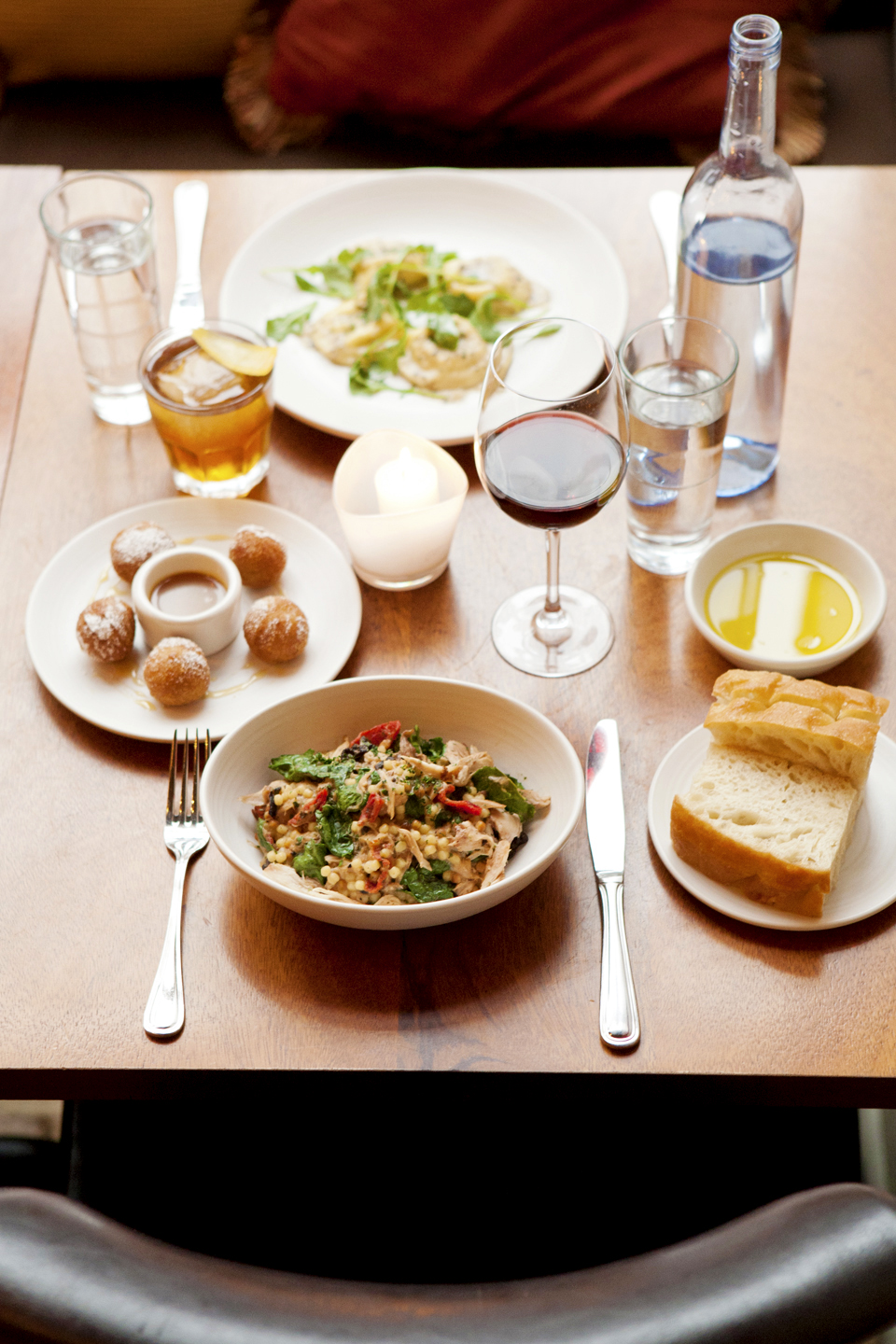Nutritionists are still bickering over whether the results of a study published last month in the New England Journal of Medicine really mean we ought to plan all our meals around sardines, walnuts and Greek wine. Skeptics of the Mediterranean Diet miracle point out that the subject group’s rates of fatal heart disease may have tumbled because its fattest members dropped out of the study before researchers starting counting dead bodies, or because the participants’ pre-existing cardiovascular risk was so outrageously high that just denying them a few potato chips should have produced the same results.
These are matters to consider, perhaps over a lentil salad and a loaf of bread with olive oil. Because even unswayed dietary experts agree no harm can come from eating fewer french fries and more beans, less cream and more nuts, less red meat and more rabbit. The avenue to good health is almost certainly paved with tomatoes and garlic.
In a fortuitous stroke of timeliness, Maria Hines last year wrote the menu for her third restaurant, Agrodolce, firmly in the Mediterranean mold. The three-month-old Fremont restaurant presents an arsenal of flavors wrung from citrus fruits, olives, and onions. Whether or not the dishes make scientific sense, the best of them are likable and bright.
Yet the restaurant’s greatest strength is not its frightfully current pantry but its wonderfully oldfangled service. A James Beard Foundation darling who was recently named a semifinalist for the prestigious Outstanding Chef award, Hines has the industry’s implicit permission to buck trends if she chooses. And at Agrodolce, her small acts of subversion reveal how much she cares about her customers.
Hines has thoughtfully eliminated the modern nuisances that perennially surface on lists of eating-out peeves. The high-backed mocha-leather chairs are comfortable. The bare wooden tables, splayed in rows across the room, are spaced appropriately, with each assigned to just one party at a time. Coat hooks are plentiful. The menu is arranged in courses, which aren’t designed to be shared or delivered according to the kitchen’s whim.
Perhaps best of all, nobody lectures diners about the restaurant’s concept: The only hint that Agrodolce, like its predecessors, is certified organic by Oregon Tilth is a tiny note at the bottom of the menu indicating that the two dozen underlined items haven’t passed official muster. And lest that sounds like too many exceptions, it’s worth noting the outliers are local mussels and foraged mushrooms, not pork wings and powdered cheese.
So curmudgeons should probably book a table (in another concession to convenience, Agrodolce accepts reservations and keeps long hours), knowing they’ll be properly coddled by kindly servers who don’t cast cheating glances at diners’ menus when quizzed about an appetizer or cringe when asked for wine-pairing suggestions.
The confident service contributes to the urbane feel of the handsome room, fronted by white casement windows which reach to the ceiling. A similarly patterned interior wall separates the dining area from the bar and a loungy area partially concealed by long red drapes. In the room’s main section, the lighting’s dim enough for romance or frank conversation—Agrodolce’s a ringer for the backdrop restaurants in movies that chronicle the failing marriages of inexplicably wealthy artists or college profs—but not so dark that a solo diner can’t bring a book.
That’s a fine thing, since Agrodolce may be a restaurant best enjoyed without much company. I loved Agrodolce when I ate there alone; liked it slightly less when I returned with a companion; and found myself repeatedly apologizing when I dragged three friends there. I suspect that’s because the food isn’t engineered to wow on first bite, so the pass-and-play style of eating falls flat. Most of the dishes are fairly elemental, which is rough on diners looking for culinary conversation-starters, but ideal if you’re wanting to string together a coherent four-course order with drinks to match.
The simplicity of executive chef Jason Brzozowy’s cooking makes it difficult to obscure flaws, which nearly always involve too much salt. A cauliflower soup, scribbled with a brawny black-olive vinaigrette, was thicker than its vegan profile would suggest. But like a gangster pummeling a rival who refuses to give up information, the kitchen had smacked the soup with so much salt in hopes of extracting flavor that it ultimately incapacitated the vulnerable vegetable. A well-oiled muddle of tiny white controne beans and lacinato kale underlying a beautifully medium-rare slab of tuna was also hopelessly salty, as was a side dish of seared broccoli beribboned with a tongue-tingly anchovy vinaigrette.
Fortunately for diners who get thirsty, general manager Aaron Robinson has assembled an excellent cocktail list, populated with drinks which don’t attempt to overpower the food. The Curveball, made with bourbon, rum, amaro, and lemon pink-peppercorn bitters, is a sophisticated and alluringly viscous alternative to a Manhattan, while the Old Aquaintance—built on a base of scotch and Averna—has an Old World warmth. The mostly Italian wine list is a boon for by-the-glass drinkers, with more than two-thirds of the wines offered in single or double portions.
From the vantage point of a table set with drinks and a few slices of rustic housemade focaccia, yeasty and more wholesome-tasting than the typical dense focaccia, it seems impossible for the evening to go awry. To prolong that sensation, order the rich house-cured pork loin, its fattiness cut by chili-flecked olive oil and age offset by twirls of fresh fennel. A spunky arugula salad dressed with blood-orange segments and ricotta salata should also keep spirits up.
But best to avoid the fried savories—particularly a greasy chickpea cake that recalls a trial batch of latkes, and the arancini. Big as miniature golf balls, they look pretty perched atop vivid green smears of parsley pesto, but there’s no call for the beef mixed into the rice: The snacks would probably play better at a Minnesota potluck. There’s also a regrettable fried chicken breast, although the menu’s coy about it. Listed as “chicken breast, winter caponata, mozzarella, bread crumb,” the entree is the same parmigiana you’ve been served at countless hotel banquets.
The menu further misleads in the section labeled “pasta made with house milled flour.” Of the four pastas listed, only the spaghetti and tagliarini are made with semolina stone-ground from durum wheat berries. All the pastas are made in-house, though, including a pleasant ricotta ravioli garnished with black-truffle butter. Among the sauces, the standouts are a nippy cream of lemons and dandelion greens and a beef bolognese tweaked with Mama Lil’s peppers.
From there, the meal might move on to a folksy cacciatora with strands of roasted rabbit or a grilled hunk of lamb paired with bitter radicchio and orange marmalade. But it should surely end with the rice-pudding fritters, which magically combine the brilliance of pudding and doughnuts. Painted with citrus honey, the dessert is even more persuasive than Spanish scientists in making the case for eating more rice. E
hraskin@seattleweekly.com









